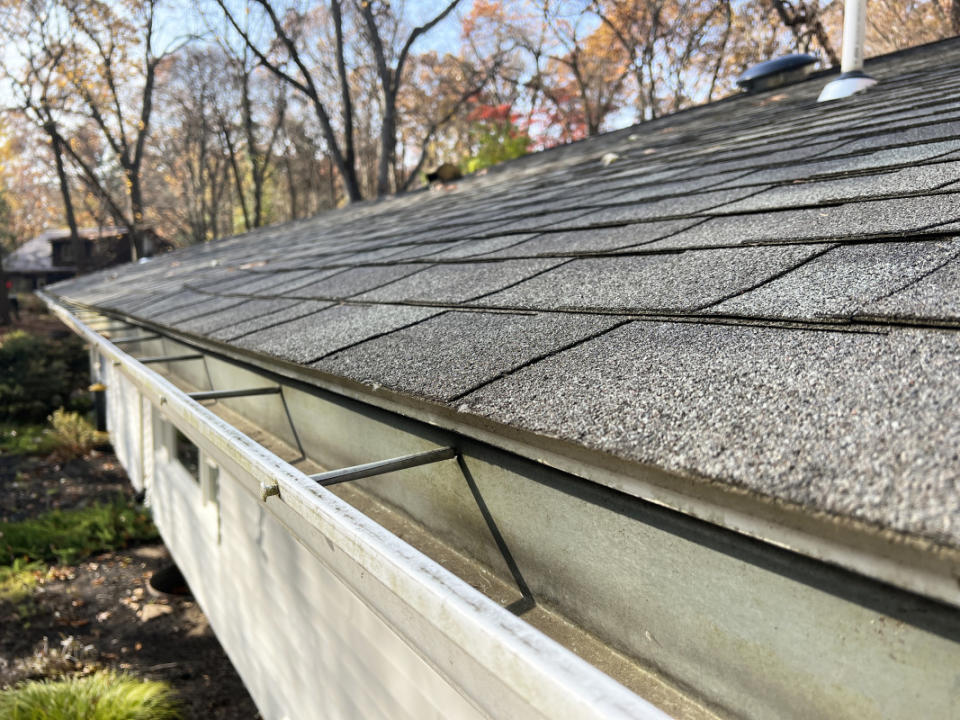Are Your Roof Shingles Buckling?
Homeowners often begin to notice signs of a buckling roof when visible deformities such as waves or ripples in the roof's surface become increasingly obvious. While the problem may have been developing for some time, the issues demand prompt attention. Learn how to identify these signs early and prevent damage and potential roof leaks.
If your roofing material exhibits symptoms of water damage or structural damage, understanding the causes and speaking with a professional roofing contractor can help you gauge the next steps for roof repair.
What does roof buckling look like?
"Buckled roof shingles look raised, like something under the surface is pushing them up," shares Mike Thomas, CARE Training Lead at GAF. "Depending on the cause, it can be visible in a few ways.
Heaving roof sheathing. When caused by the heaving of the roof sheathing, the buckling of the roof can be visible where the sheets of sheathing butt against each other. This can typically be identified by being almost perfectly vertical with the spacing of the buckling coinciding with the dimensions of the sheathing panels or decking. A contributing factor to this source of buckling can be that the sheathing panels were installed without leaving a small gap between them. This small gap, typically ?”, gives the roofing underlayment room to expand as temperature and humidity change.
Buckling can also be caused by the underlayment beneath the shingles not being flat. This buckling may be less uniform and has an appearance that is much like a mole run in a lawn. This can be due to poor installation or as a result of humidity or a high moisture level causing the underlayment to wrinkle or ridge."

Courtesy of GAF
Curling vs. Buckling
Consider the issues you're facing from ground level (it's safer down there). If you have a one-story home, climb up on the ladder to the roof's edge to take a closer look. You'll want to consider whether the layer of shingles affected reflects a small area, or if your entire roof needs attention. Try to distinguish whether your shingles are curling or buckling:
The curling of shingles makes them look convex or concave. They'll often have raised edges. Shingles can curl due to aging or temperature-related issues, such as lack of ventilation in the underlying attic space, or if you need a roof replacement.
Buckled shingles look like they are bulging from the roof. It will seem like the entire shingle is raised upward. "When shingles start to buckle, it’s an indication that something under the shingles is the concern. The sheathing or underlayment being buckled or wrinkled is being telegraphed up through the shingles," warns Thomas. It could be wet underlayment, damaged asphalt shingles, or excess moisture in the roof decking.

Emily Fazio
Can you fix buckling shingles from inside an unfinished attic?
"Yes, one can absolutely take some steps to reduce—if not fully eliminate—the buckling," shares Thomas. "When the buckling is not due to improper installation, the most likely contributing factor is moisture content or humidity."
He continues, "Roofing systems and attic spaces rely on proper ventilation to breathe and allow excess humidity to escape. Without adequate ventilation, the attic humidity levels can rise, causing sheathing to expand and buckle. Having a properly trained roofer, such as a GAF Certified or Master Elite, check and correct any ventilation issues will help ensure that the humidity can escape and in time, reduce the buckling that takes place as temperatures change."
Installing a whole house fan is a great first step, but consider getting a professional inspection to audit your space and determine what else you can do to cure poor ventilation.
"Resources like the GAF Attic Ventilation Calculator can also be helpful," suggests Thomas. "[The calculator] determines the proper amount of ventilation based on U.S. guidelines and provides options for ventilation products to suit individual needs and preferences."